 I am a postdoc Fellow at the Mediterranean Institute for Advanced Studies working in coastal systems in the Dra. Fiona Tomas lab. My research interest is to understand how environmental factors or other ecological state changes affect the processes and mechanisms of coastal systems at different levels, from individuals to communities, and at different spatial and temporal scales. Most of my work focuses on marine macrophytes and fish communities and my research is motivated by dual goals of advancing ecological knowledge and influencing management decisions. To this end, I take an integrative perspective in physiology and ecology combining observational and experimental approaches, and modelling tools.
I am a postdoc Fellow at the Mediterranean Institute for Advanced Studies working in coastal systems in the Dra. Fiona Tomas lab. My research interest is to understand how environmental factors or other ecological state changes affect the processes and mechanisms of coastal systems at different levels, from individuals to communities, and at different spatial and temporal scales. Most of my work focuses on marine macrophytes and fish communities and my research is motivated by dual goals of advancing ecological knowledge and influencing management decisions. To this end, I take an integrative perspective in physiology and ecology combining observational and experimental approaches, and modelling tools.
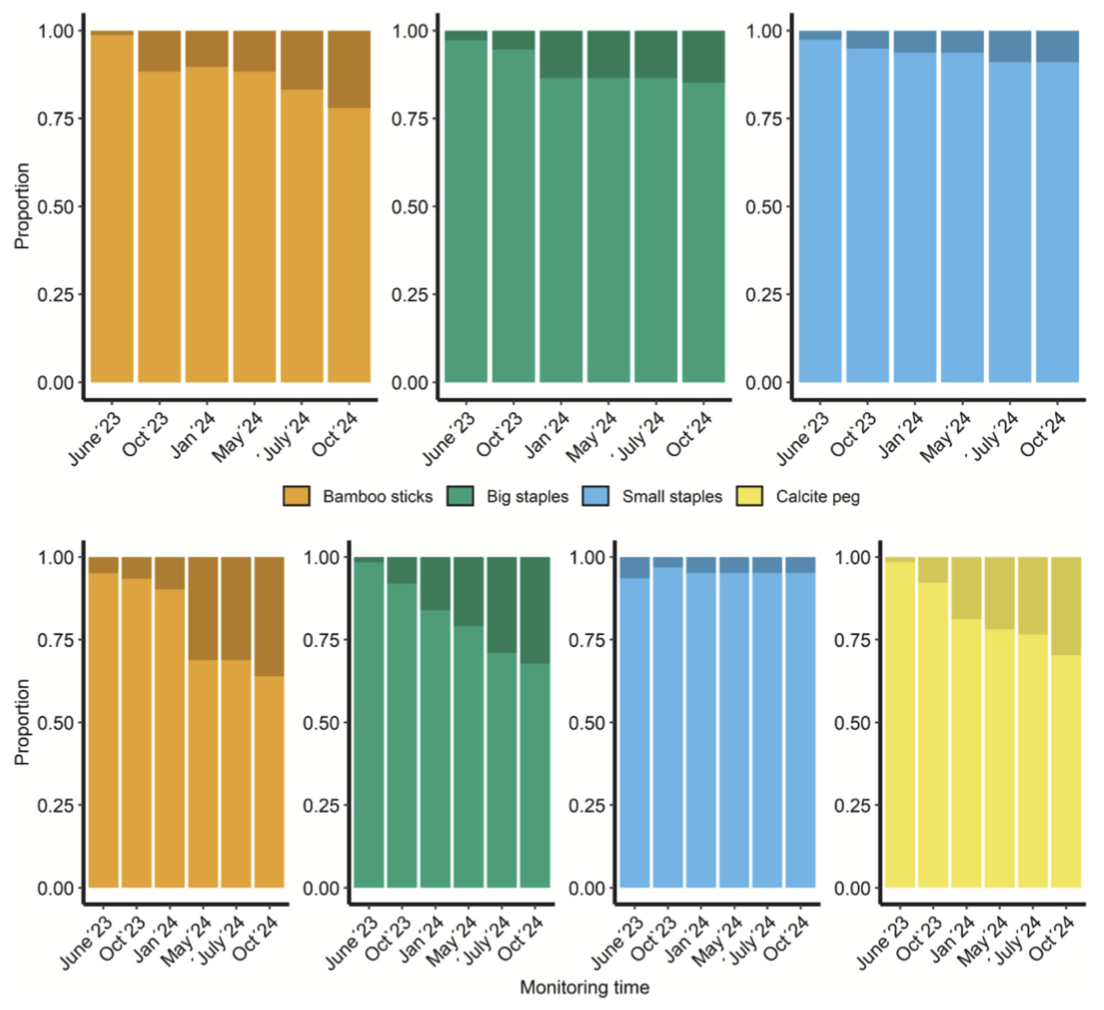
Abstract: Seagrass ecosystems face threats from multiple human-derived stressors that are causing the loss of these important habitats worldwide. Active restoration using innovative, cost-effective techniques, particularly with uprooted fragments that avoid damage to donor meadows, offers potential for recovery. However, non-ecological factors such as cost, logistics or supply are rarely considered but are essential for decision-making and implementation. This two-year study evaluates the feasibility and effectiveness of four anchoring techniques for securing uprooted Posidonia oceanica fragments to the substrate, integrating ecological success with feasibility to identify optimal methodologies. Experiments were conducted in two bays in Mallorca characterized by historical P. oceanica presence. Big staples, small staples, bamboo sticks and calcite pegs, were tested to fix fragments with plagiotropic rhizomes. Across sites, small staples and bamboo sticks supported high establishment success (94 %) while having a low carbon footprint, and ease of use. These methods effectively utilized smaller fragments, which are more commonly available, making them practical for large-scale projects. Although larger fragments may develop more new shoots, their limited availability restricts widespread application. As expected, shoot survival declined, a common patter observed early in P. oceanica restoration process, indicating that a two-year period is insufficient to fully assess long-term restoration success. Consistent performance across sites indicates broad applicability of these techniques in Mediterranean shallow, sheltered areas. Non-ecological indicators also highlight the socio-environmental benefits of bamboo sticks and small staples, making them well-suited for sustainable restoration. These findings underscore the need for a balanced, integrated approach that aligns ecological outcomes with efficiency metrics.
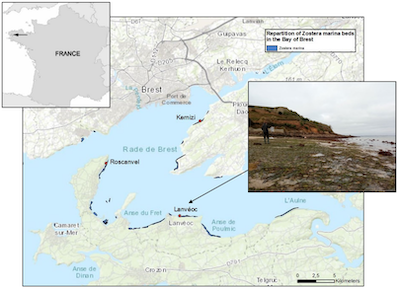
Abstract: Silicon is a major driver of global primary productivity and CO2 sequestration, and is a beneficial element for the growth and environmental stress mitigation of many terrestrial and aquatic plants. However, only a few studies have examined the occurrence of silicon in seagrasses, and its function within seagrass ecosystems and the role of seagrasses in silicon cycling remain largely unexplored. This study uses for the first time two methods, the wet-alkaline digestion and the hydrofluoric acid digestion, to quantify silicon content in seagrass leaves using the species Zostera marina and elaborates on the potential role of silicon in seagrass biogeochemistry and ecology, as well as the role of seagrass ecosystems as a silicon reservoir. The results revealed that seagrass leaves contained 0.26% silicon:dry-weight, which is accumulated in two forms of silica: a labile form digested with the alkaline method and a resistant form digested only with acid digestion. These findings support chemical digestions for silicon quantification in seagrass leaves and provide new insights into the impact of seagrasses on the marine silicon cycle. Labile silica will be recycled upon leaf degradation, benefiting siliceous organisms, while refractory silica will contribute to the ecosystem’s buried silica stock and coupled carbon sequestration. In the Bay of Brest (France), the seagrass silicon reservoir was estimated at 0.18 ± 0.07 g Si m⁻2, similar to that of benthic diatoms, underscoring the potential role of seagrasses in silicon biogeochemistry in the land–ocean continuum, where they might act as a buffer for silicon transport to the ocean.
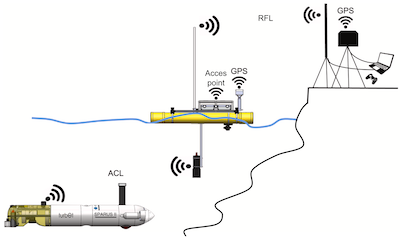
Abstract: This paper describes an advanced methodology to monitor and assess, in temporal series, meadows of the seagrass Posidonia oceanica. The process includes, the following steps: (a) exploring marine regions of certain biological interest with Autonomous Underwater Vehicles equipped with cameras looking downwards, (b) taking images continuously during missions of preprogrammed trajectories, (c) processing the images off-line to build colour photomosaics, (d) segmenting seagrass from the background in every image using a pretrained Neural Network, (e) computing the same photomosaics but using the segmented images, and (f) computing automatically the bottom coverage of the seagrass counting the proportion of pixels labelled positively. This procedure avoids the involvement of divers, allows increasing depth, extension and duration of missions and offers 2D maps of the whole inspected areas in a single view, which allows us to get more accurate coverage measurements than those obtained with traditional techniques. Experiments have been performed with datasets collected in areas of the Balearic Islands colonized with P. oceanica seagrass and subject to low and high touristic and anchoring pressure during high season, repeating the same transects in consecutive years in order to obtain interannual results. Data obtained with this methodology permit a direct biological qualitative, quantitative and temporal analysis and interpretation, such as the percentage of temporal decline of seagrass coverage in some of the surveyed areas and the annual increase of the meadows extension in others.
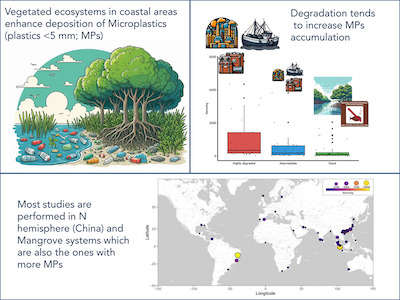
Abstract: Microplastic (plastics < 5 mm; MP) contamination in the marine environment has gained global attention due to its continuous accumulation and serious threats to ecosystems. This review evaluates patterns of MP accumu- lation in seagrasses, mangroves, and saltmarshes to provide an integrated view of MP pollution. Since 2011, studies have examined the sources, distribution, characterization, and fate of MPs in these habitats. We found an unequal geographic distribution with most studies conducted in the Northern Hemisphere and in mangroves, which have the highest MP concentrations compared to saltmarshes and seagrass beds, particularly near urban centers and fishing zones. Almost 40 % of the outcomes of our meta-analysis show a higher MP accumulation in vegetated than unvegetated sites. Also, degraded and highly-degraded sites exhibited higher amounts of MPs than less-degraded areas. In addition, secondary MPs are the dominant form, with less dense polymers (poly- ethylene, polystyrene, and polypropylene) being more abundant and blue, black, and transparent the most common colors. Methodological differences in reporting units, sampling depths, and extraction methods reduce study comparability and increase variability. This review provides a comprehensive understanding of MP research in coastal ecosystems, revealing critical knowledge gaps affecting MP distribution, such as vegetation density, diversity, and hydrodynamics, and emphasizes the need for standardized methodologies for accurate comparisons.
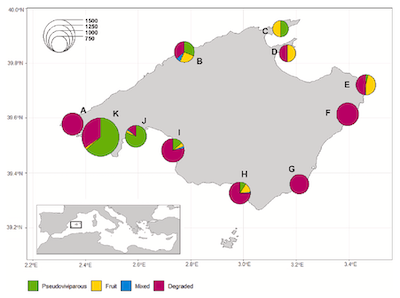
Abstract: Seagrasses are marine flowering plants that create critical coastal ecosystems and are threatened by warming. Clonal expansion is generally the dominant strategy for meadow recovery, while sexual reproduction strongly differs among species (e.g., monoecious and diecious species, some creating seed banks, viviparous seedlings). In 2022, the Western Mediterranean underwent unprecedented warming, and, associated with it, we observed flowering (100 %) across 11 Posidonia oceanica meadows in Mallorca, Balearic Islands. Furthermore, 64 % of the sites also exhibited pseudovivipary, an extremely rare phenomenon in angiosperms whereby plantlets replace sexual reproductive structures, producing clones of the maternal plant. Our results support the notion that P. oceanica flowering and pseudovivipary (genetically confirmed) are triggered by warming, never before being pseudovivipary reported across multiple sites in a marine plant. Considering the negative impacts that warming can have on seagrasses, existence of widespread pseudovivipary is a critical aspect to consider for understanding mechanisms of resilience in seagrasses.